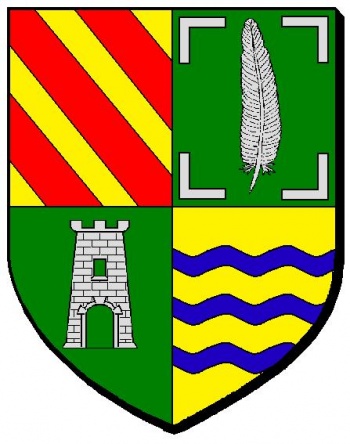Ollans: Difference between revisions
Knorrepoes (talk | contribs) m (Text replacement - "{{fr}}" to "") |
Knorrepoes (talk | contribs) m (Text replacement - "|'''English''' ↵| {{blazon wanted}}↵" to "|'''English''' | blazon wanted ") |
||
| Line 15: | Line 15: | ||
|- | |- | ||
|'''English''' | |'''English''' | ||
| | | blazon wanted | ||
|} | |} | ||
Revision as of 11:26, 7 April 2023
OLLANS
Département : Doubs
| French |
Écartelé : au 1er d'or à trois bandes de gueules, au 2e de sinople à la plume d'argent posée en pal et accompagnée de quatre équerres affrontées du même (deux en chef et deux renversées en pointe), au 3e de sinople à la tour d'argent ouverte et ajourée du champ et maçonnée de sable, au 4e d'or à la tierce ondée d'azur. |
| English | blazon wanted |
Origin/meaning
The three bends in the first quarter are the arms of the Lords of Faucongey, who owned the village in the late 13th century.
The second quarter refers to two famous inhabitants; the quiver stands for the writer Sully Prudhomme, who often visited his friend who lived at the castle. He also wrote his book 'Le Bonheur' here in 1888. The four corners refer to the architect Marcel Boutterin, who was born in Ollans in 1888.
The tower in the third quarter symbolises the local castle. The fourth quarter symbolises the Ognon river.
Literature: Image from http://www.armorialdefrance.fr
